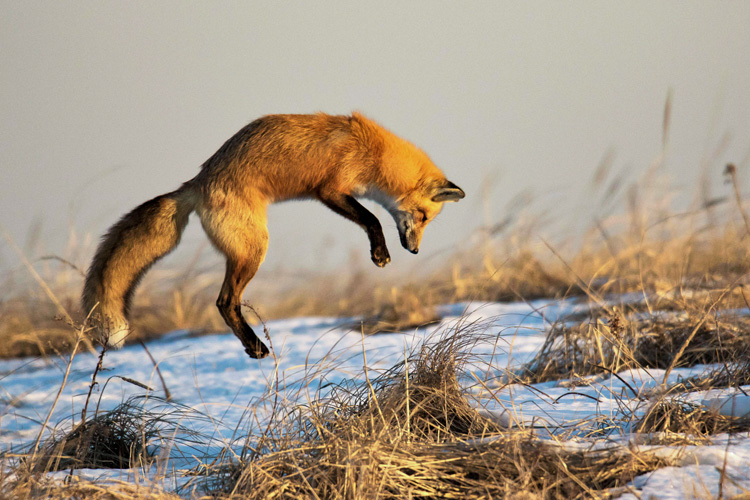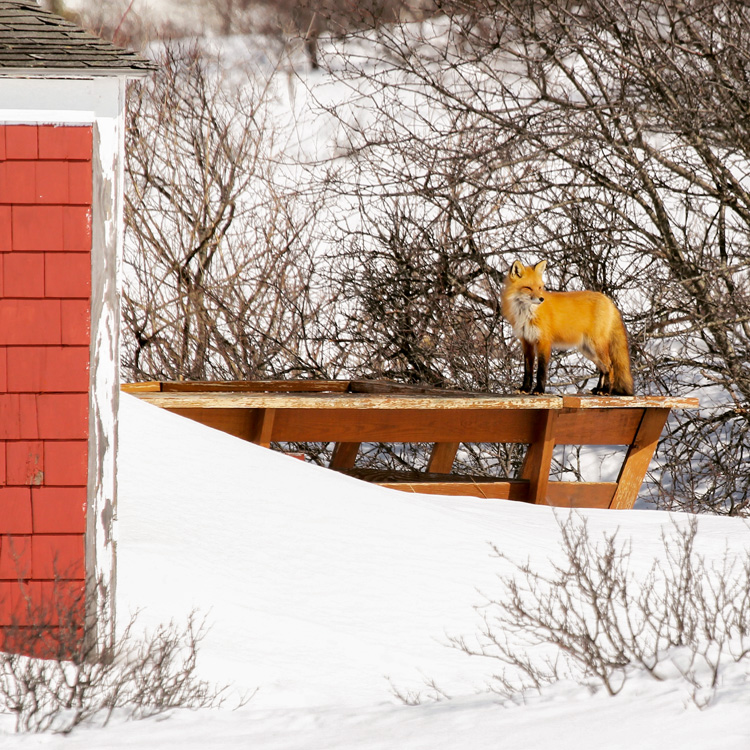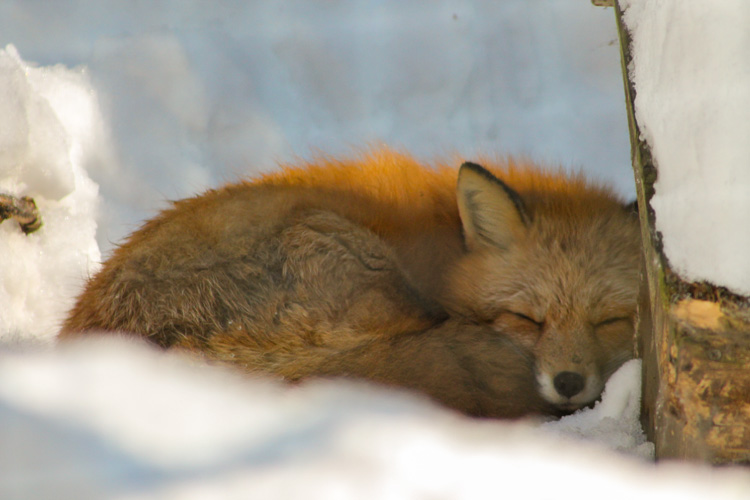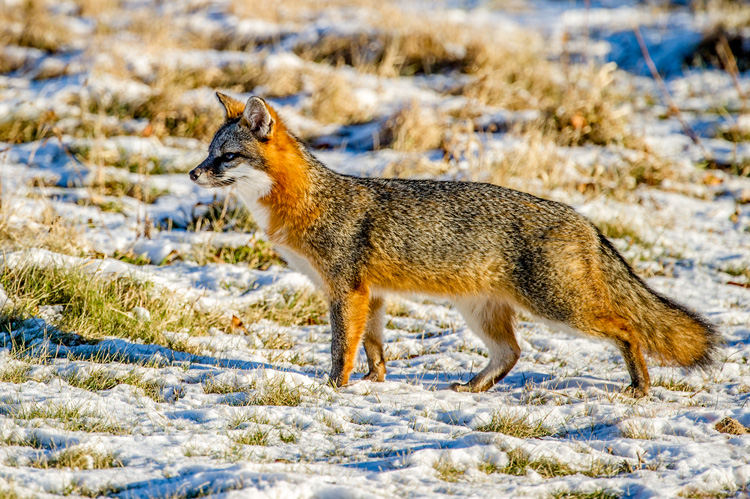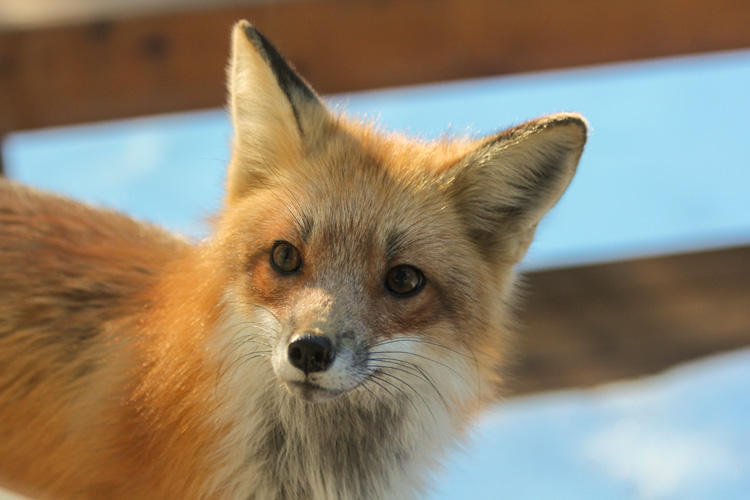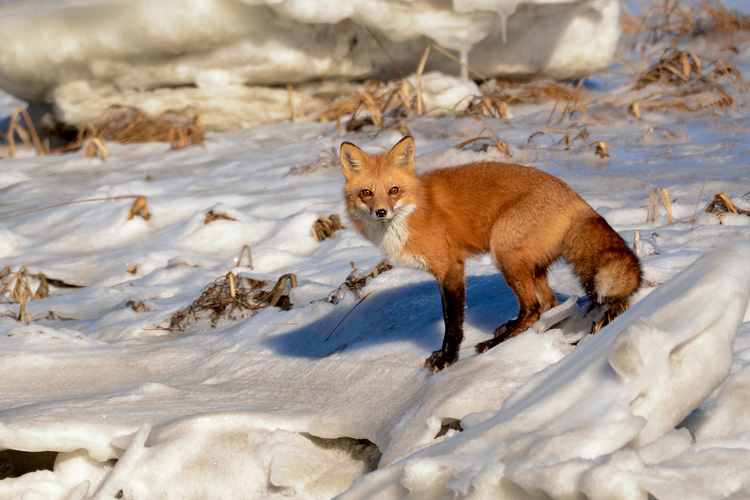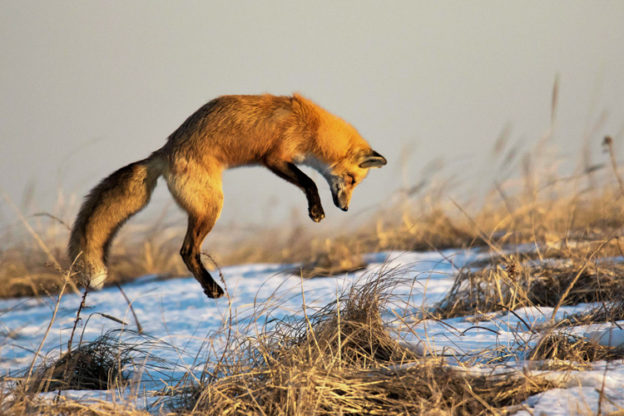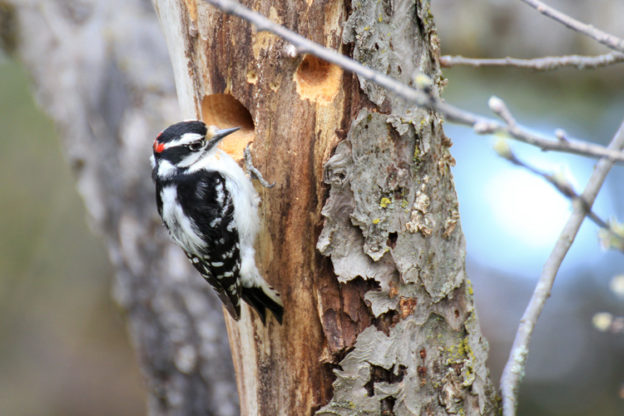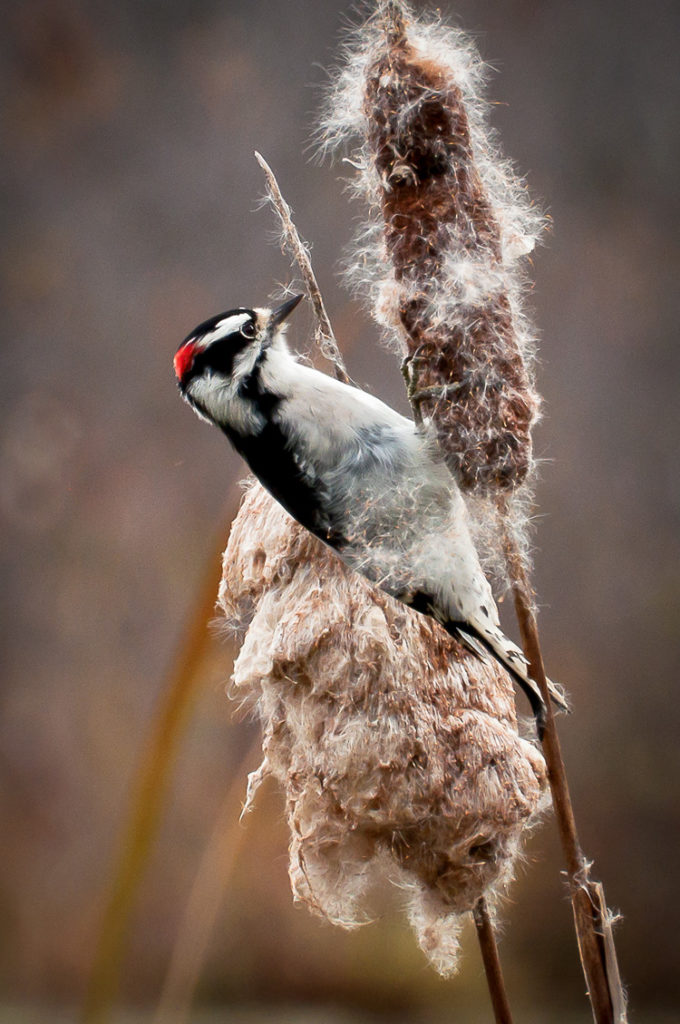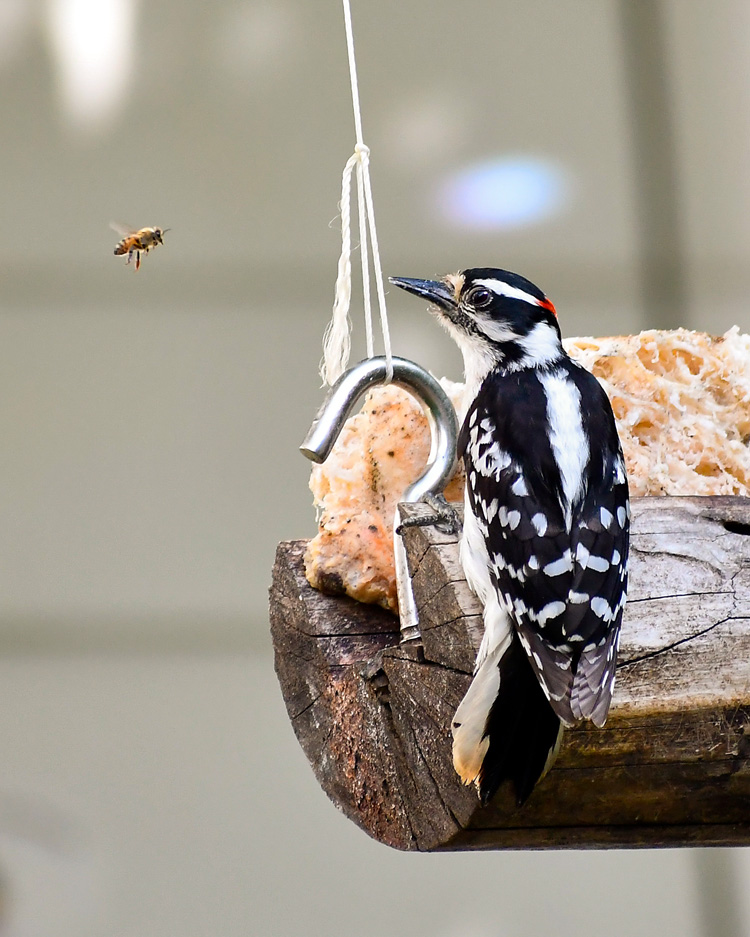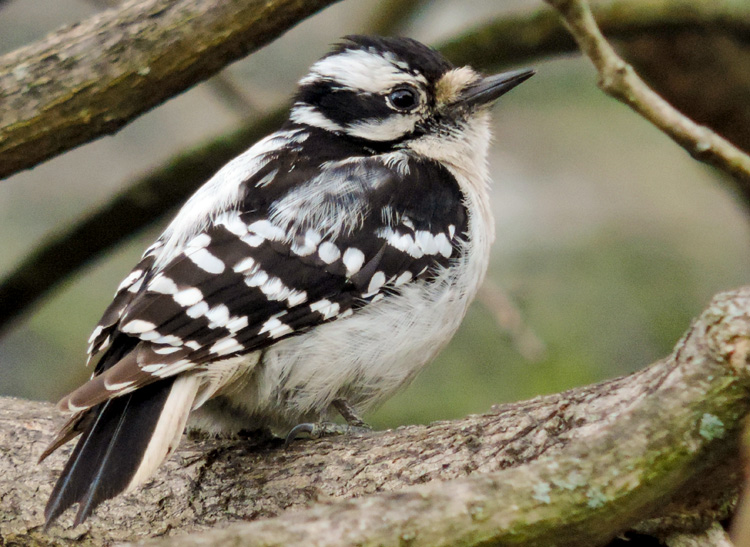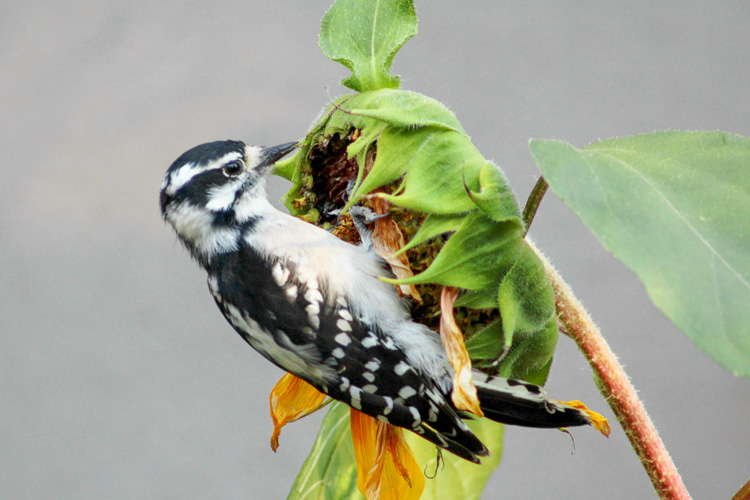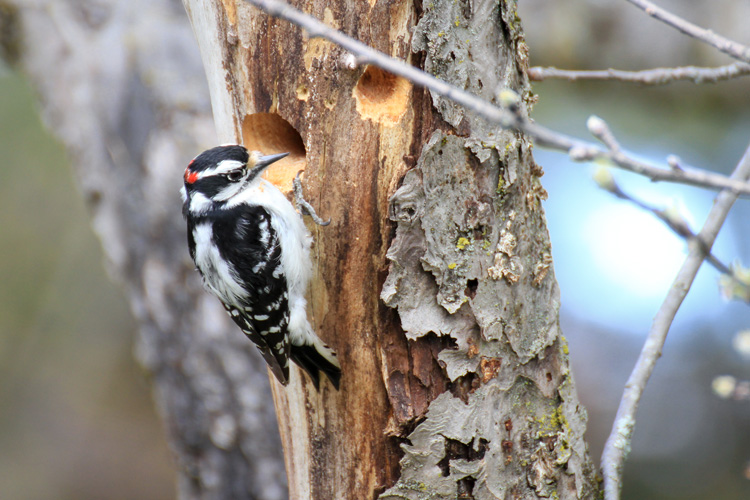As the breeding season for foxes winds down (typically lasting from mid-January through February), females will be seeking dens in which to give birth and raise their young, called “kits.” Although both Gray and Red foxes (the two species found in Massachusetts) are nocturnal, it is common to see adults hunting during the day while they are raising young, so after the gestation period of 7–8 weeks, you may have better odds of spotting one during daylight hours.
Foxes typically produce 3-6 pups. The young are blind and helpless at birth and remain in the den until 4–5 weeks old. They’re weaned at around 12 weeks and come fall the family members will go their separate ways and become independent (both parents assist in raising the young).
It’s not uncommon for foxes to use crawl spaces under a shed or deck as dens, but a fox den in the backyard presents little reason for concern: foxes would much rather avoid people than confront them. Plus, watching the young as they play and develop the skills they will need as an adult can be a joy to both adults and children. Of course, always remember to keep a respectful distance from any wildlife, refrain from feeding them (this includes securing outdoor garbage and pet food containers), and report any sick animals or unusual behavior to your local police department.
Learn more about foxes on our website and enjoy these five photos of foxes in winter from our annual Picture This: Your Great Outdoors photo contest.
